Recommended
Categories
Reprinted Articles
Learn to Read Piano Music |
|---|
| by Nick Krueger |
|
Learning a chord-based approach to playing the piano might have you rockin' and rollin' in not time, but many people want to know and understand what they are playing by learning how to read piano music. This could take time, a few months or even years, but those who learn to read piano music don't have to hear a song before they play it. They simply look over the piece of sheet music and are able to 'hear' the score before them. Understanding the notes is like being able to read another language. The first steps to learning how to read piano or keyboard sheet music involve learning the notes and clefs that a piece of music is composed of. This will let you know whether you need to play in a treble clef, or high tone, or if the piece is written for deeper or lower tones, called a bass clef. Next, you must be able to designate which notes are what, where they are located, and why they are there. Notes are broken down and depicted individually on what is called a stave, the five parallel lines music is written on. Depending on where the note is on the stave, on the lines or in the spaces, this will formulate how a song should be played. Different parts of the musical score will detail each section's notes all at once to help the conductor lead an entire symphony. The next step to reading piano sheet music is a bit more complicated. The time signature is another important feature to focus on because it tells you at what pace the song should be played. These are often made up of vertical bar lines, which indicate when and where a song begins and stops. On this time signature there are numbers that indicate how many beats exist per measure. You'll learn to recognize the time signature, what it means, and how it controls the rhythm of a song as you continue learning how to read piano music. The final step to understanding a piano score involves understanding the next type of signature. This is called the key signature. The key signature tells you in what key the piece should be played. This can vary from sharp, to flat, to natural. Sharp keys are the black keys found just above the white keys on a piano or keyboard. The notations on the key signature indicate what part or parts of a song need to be emphasized or not. By learning to read piano music, you will not only be able to understand the piece before you, but you will also gain a deeper appreciation for the music. About The AuthorNick Krueger is a review specialist at http://Reviewica.com. For more information on learning to play the piano and related product reviews, please visit: http://Learn-to-Play-Piano.Reviewica.com. |
Recommended Stuff
Beginner Piano:
| Learn Songs - Learn 3 Easy Songs, free Virtual Piano provided |
| Chords - Learn how to construct Major Chords, Primary Chords & more |
| Music Theory - Key Signatures, Major Scales, Intervals & more |
| Improvisation - Chord Inversions, and different Chord Patterns |
| Techniques - Pentatonic Scale, Whole Tone Scale, Arpeggio |
Free Piano Reference
Music Terms Glossary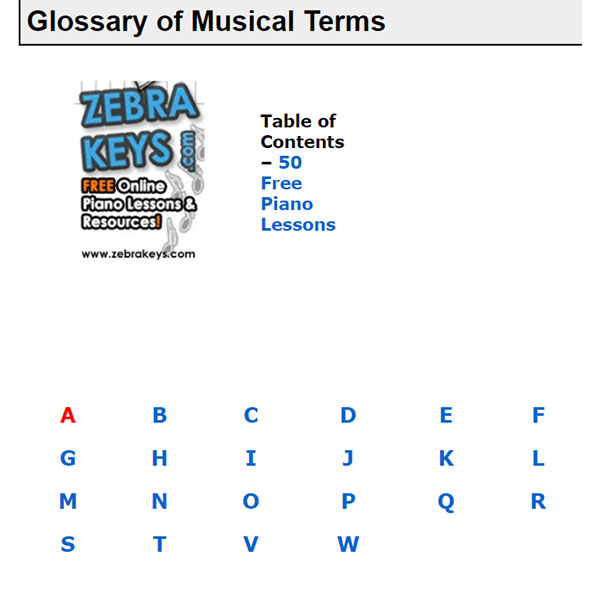 |
FIND any CHORDS using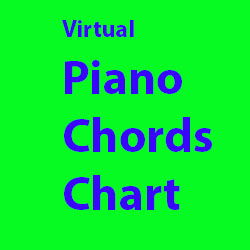 |
Music Notation Chart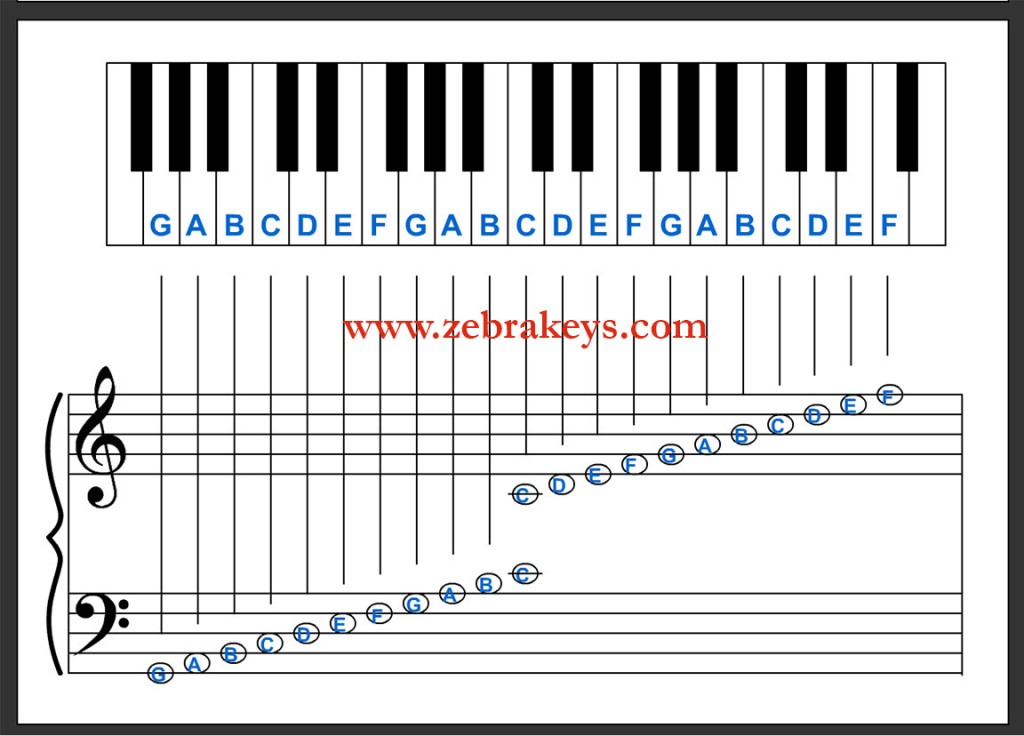 |
| TRANSLATE this content |
| Beginner Piano | | | Intermediate Piano | | | Advanced Piano |
|
List of 50 Free Lessons
Piano Basics 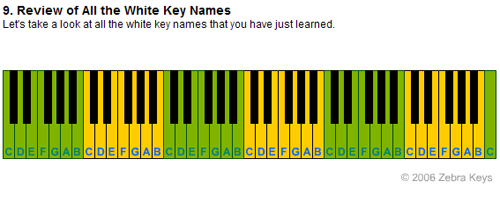 Lesson 1 - Patterns of Piano Keyboard Lesson 2 - Names of White Keys Lesson 3 - Names of Black Keys Lesson 4 - Grand Staff Lesson 5 - Note Durations |
Use our free Virtual Piano Keyboard in conjunction with these free lessons:
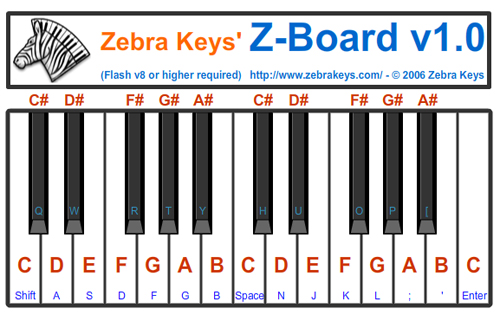 |
|
Beginner Piano Lesson 6 - Brother John Lesson 7 - London Bridge Is Falling Down Lesson 8 - Twinkle Twinkle Little Star |
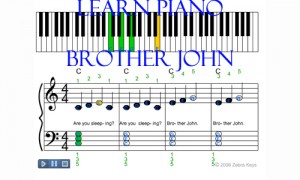 |
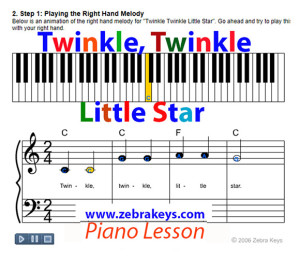 |
| Lesson 9 - Major Chord |
|
FIND any CHORDS using Free Virtual Piano Chord Chart 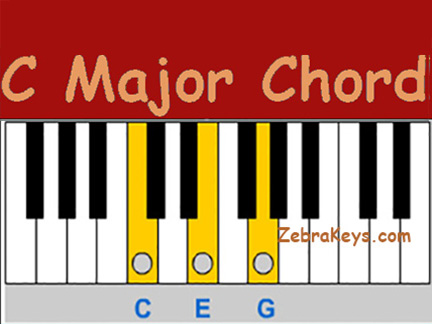 |
|
Lesson 10 - Three Primary Chords Lesson 11 - 12 Bar Blues Chord Progression |
| Lesson 12 - 12 Keys of Music |
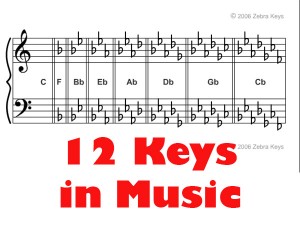 |
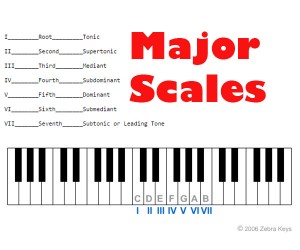 |
|
Lesson 13 - Major Scale
Lesson 14 - Musical Intervals Lesson 15 - Chords of the Major Scale Lesson 16 - The Circle of Fifths |
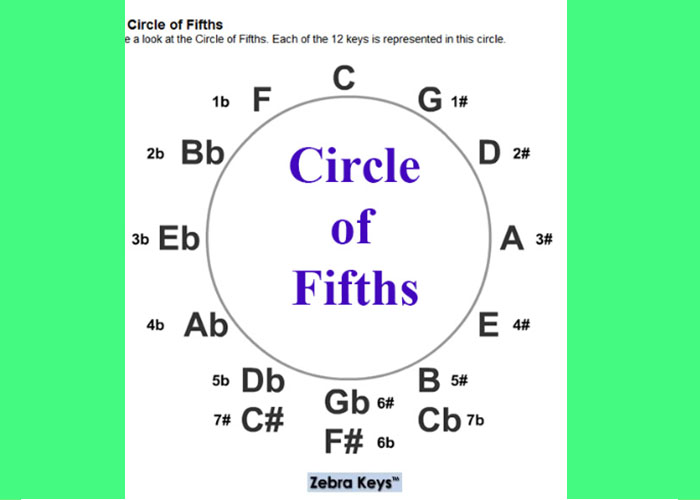 |
|
Lesson 17 - Chord Inversions Lesson 18 - Double Chord Pattern Lesson 19 - Broken Chord Pattern Lesson 20 - Arpeggio Chord Pattern Lesson 21 - Sounds of the Orient (Pentatonic Scale) Lesson 22 - Mysterious Sounds (Whole Tone Scale) Lesson 23 - Arpeggios |
|
Intermediate Piano Lesson 24 - America (My Country Tis of Thee) Lesson 25 - Silent Night Lesson 26 - God Rest Ye Merry Gentlemen |
|
Lesson 27 - Minor Chord Lesson 28 - Three Secondary Chords Lesson 29 - Dominant 7th Chord Lesson 30 - Major 7th Chord Lesson 31 - Minor 7th Chord Lesson 32 - Natural Minor Scale Lesson 33 - Chords of the Natural Minor Scale |
|
Lesson 34 - Melody as Octaves Lesson 35 - Root Chord Pattern Lesson 36 - Harmony Notes Lesson 37 - Major Chord Inversions Lesson 38 - Chord Inversion Straddles |
|
Advanced Piano Lesson 39 - The First Noel (Flash demo version) Lesson 40 - Auld Lang Syne Lesson 41 - Hark! The Herald Angels Sing |
|
Lesson 42 - Diminished Chord Lesson 43 - Augmented Chord Lesson 44 - 6th Chords Lesson 45 - Sus2 Chords Lesson 46 - Sus4 Chords Lesson 47 - Major 9th Chords Lesson 48 - Major 11th Chords Lesson 49 - Major 13th Chords Lesson 51 - Blues Scale |






